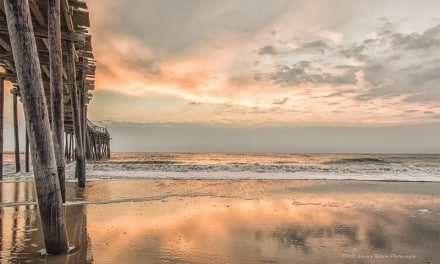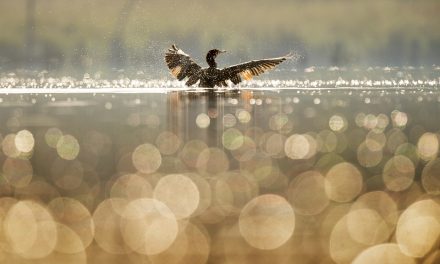What is it about some images that grab your attention, drawing you in?
Why do some photos seem to have it, while others look flat and boring?
Often, this comes down to perspective –and how well the photographer was able to effectively introduce a sense of depth and scale into an image. We live in a three-dimensional world, yet photography is a two-dimensional format. The challenge then, is finding a way to create photos that maintain a real-world sense of distance, size, and scale. No small feat!
Images that include a sense of perspective and depth are engaging –and visually powerful. Often, a sense of perspective can help to transform what would have otherwise been a standard snapshot, into a fascinating image. Images with perspective appear more true to life, and draw the viewer in –making them feel as if they’ve stepped into the image.
If you’re looking to create spectacular three-dimensional landscape images, looking to include visual cues that indicate depth or distance will help. Here are a few ways that you can capture a sense of depth in your photos.
→ Related reading: 15 Steps to an Amazing Landscape Photo
Linear Perspective
Our eyes tend to determine distance based on how lines converge at the horizon –something that’s known as linear perspective. When we see an image that has leading lines that disappear at the vanishing point at the horizon –our mind instantly recognizes that there is distance –or depth in the image. When composing your landscape shots, keep an eye out for leading lines you can include –like a river, a road or track, or even a row of objects that gradually get smaller as they get farther away.
Object Overlap
It may sound obvious, but object overlap –or layering, is a great way to impact the sense of distance and depth in a photo. When objects in the image are closer to you –they’ll overlap or partially block objects that are further away. This helps to clue the viewer in on how close –or distant objects are. If your composition looks flat and two-dimensional, consider adjusting your angle slightly to include some overlapping subjects. Side lighting –morning and afternoon light, helps to highlight the details of the land and is especially ideal for capturing landscape images with overlap.
Atmospheric Conditions
Picture a scenic vista point –imaging that you’re looking off into the distance at a series of mountain ranges. The farther away the ranges are, the hazier they’ll appear to be. When looking at an image, the haziness of objects can indicate distance, giving the viewer an idea on just how far away objects are. To create a sense of haze in the distance, set your lens to manual and focus it just short of infinity –this will help to blur the far-away hills and help to add a sense of depth to your photo.
Relative Size
The relative size of something can help to show a sense of size and scale. When we’re familiar with the size of an object, our minds are better able to determine just how big the large object is. If you’re trying to show the grandeur of a waterfall, tree, or boulder, consider including a person, animal, or other recognizable subject in your shot to show how large the subject is.
Consider Your Camera Lens/Focal Length
Your lens can impact the sense of perspective in an image. If you are looking to add more depth to your photos, you’ll want to consider a wide angle lens. Wide angle lenses tend accentuate the space between foreground and background objects, enhancing the sense of distance in an image. Telephoto lenses on the other hand, draw distant objects in closer –which means they also compress the foreground and background, minimizing the appearance of depth in a photo.
Change Your Angle
One of the best ways to add some perspective to your image is by changing your angle. Get down low and include some foreground –or get up higher and capture the scene from a birds-eye view. Often, even taking a few steps to the left or the right can result in a completely new perspective, and give you the chance to incorporate elements that can indicate depth or distance.
Framing
Framing can be a great way to add depth to an image. Keep on the lookout for ways to frame your compositions –this could include fences, walls, trees, or anything that you notice that can help to grab attention and draw you into the photo. Or, consider a “frame within a frame” approach that uses a doorway, arch, or other interesting structure that will create a frame in your photo.
Look for Foreground That Stretches Into the Background
Another great way to convey a sense of depth in your photo –is by looking to include some foreground that stretches off into the distance of your image. For example, a bridge, a fence, a road, or even a fallen log can all be great subjects to try this technique on. By angling your camera so that your image includes the subject in the foreground –as it stretches into the background, you can create a dramatic photo that has a distinct sense of distance. Using a wide angle lens is especially helpful for this technique, as it will help to stretch the foreground, further accentuating the sense of depth in an image.
→ Related reading: How to Use Foreground Elements in Compositions
Consider Portrait Mode
Most landscapes are shot in landscape mode (horizontal) –and understandably so. Landscape mode allows you to capture those sweeping mountain vistas and wide, rolling hills. Sometimes though, a composition will call for a portrait photo (vertical). Portrait angle allows you to include plenty of foreground –and the vertical angle will help you to create images with more depth.
→ Related reading: Why You Should Challenge Yourself to Take More Landscapes in Vertical Orientation
So the next time you’re out capturing landscapes, look for ways to include a sense of perspective in your photos. This will result in images with depth and distance –ones that convey a sense of our three-dimensional world –in a two-dimensional photograph.
Have fun capturing dynamic landscape images!
How do you incorporate depth and perspective in your landscape images?
Photo license links: CC BY 2.0, CC BY-SA 2.0













